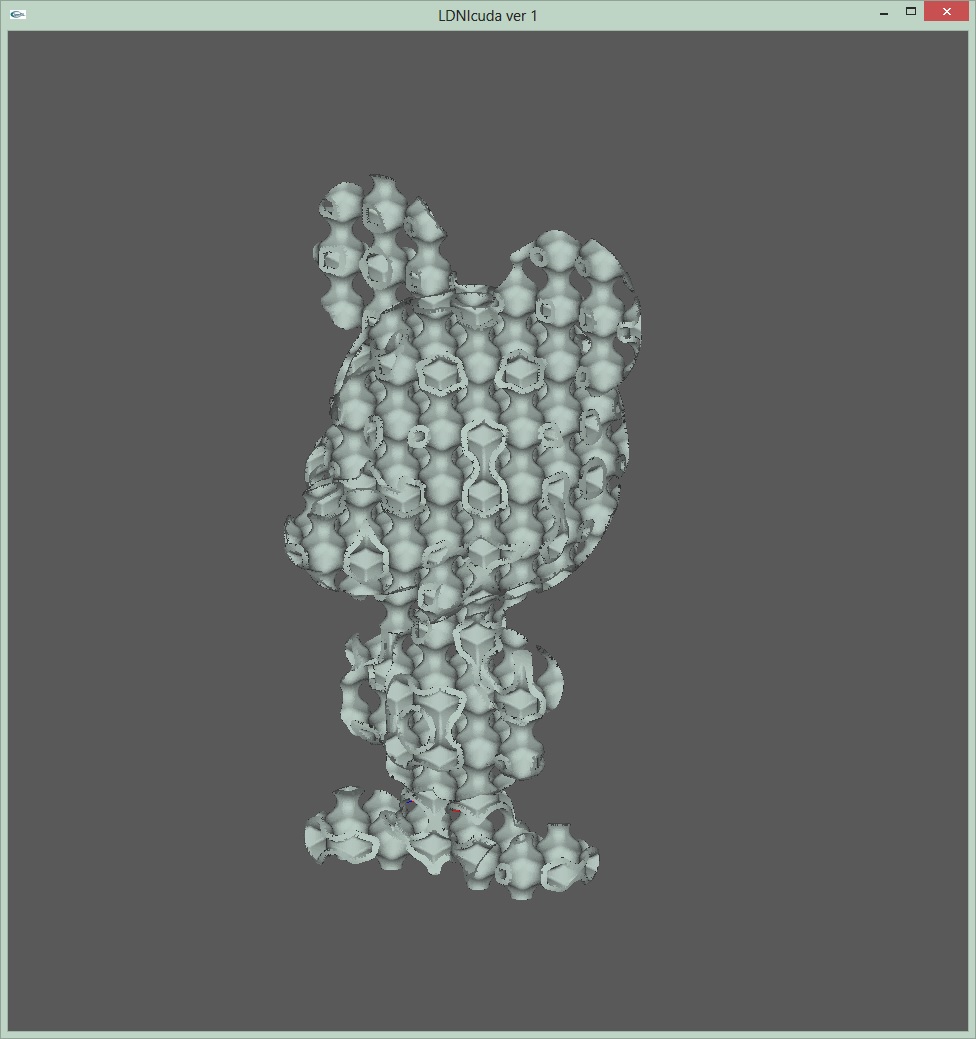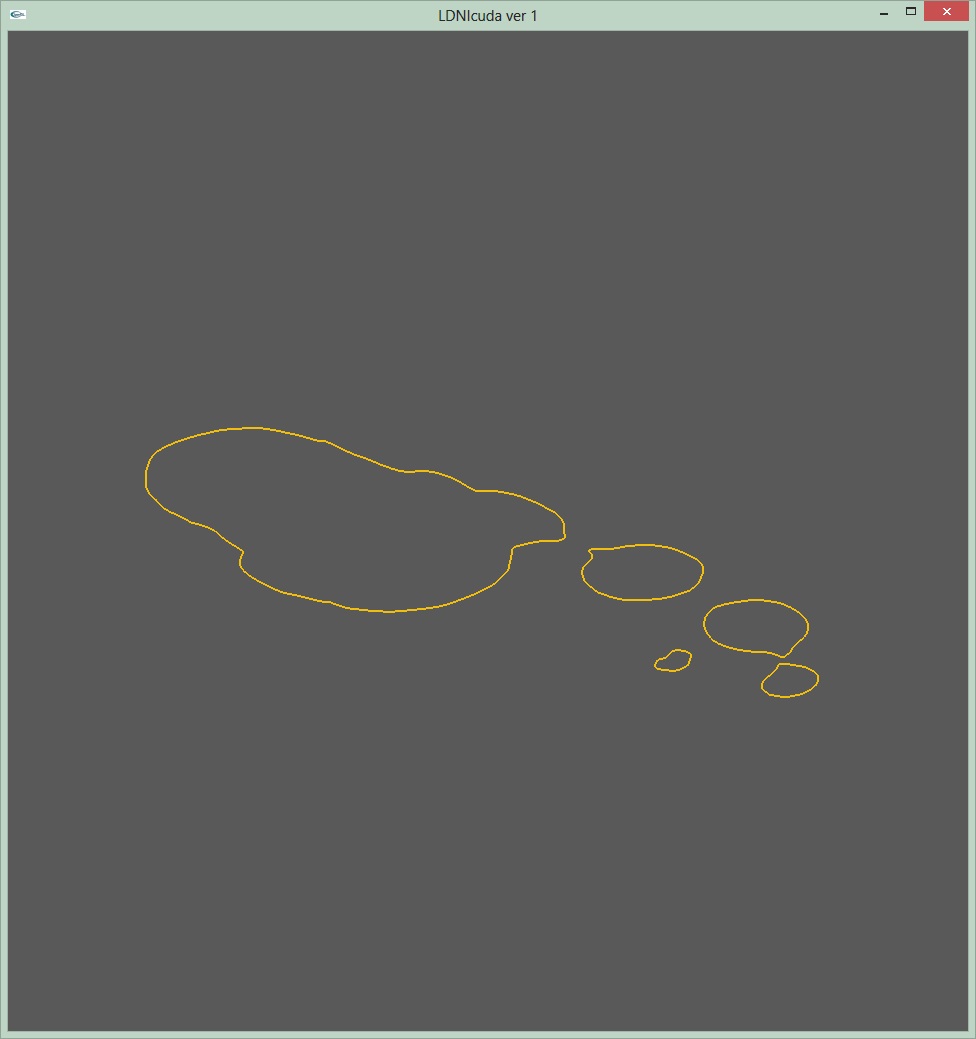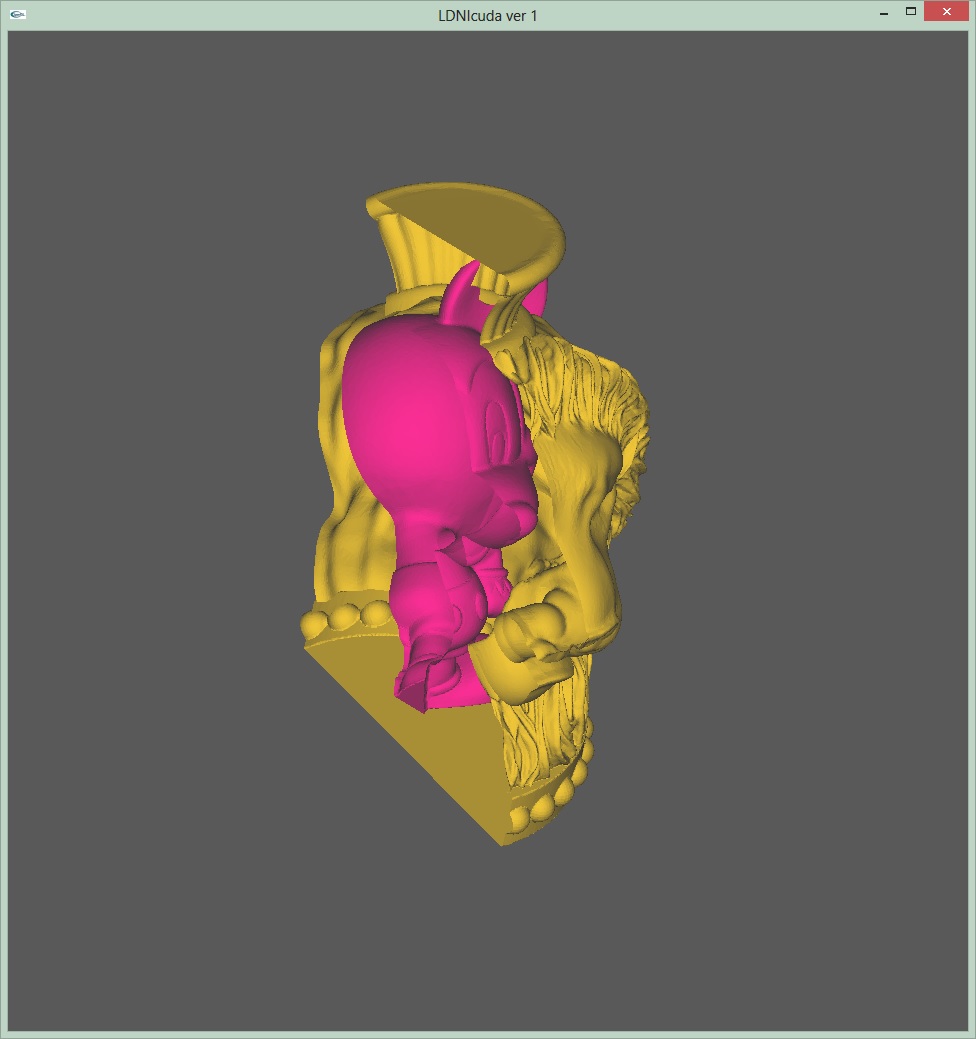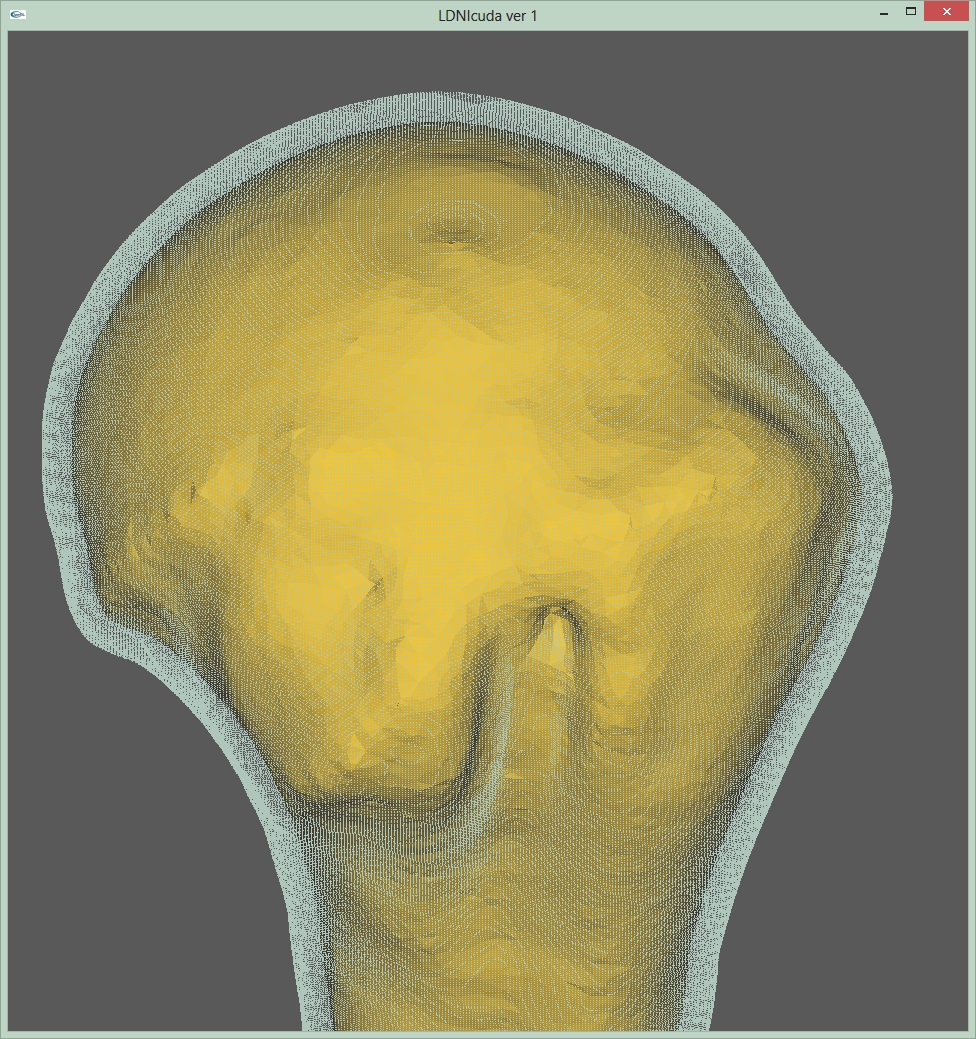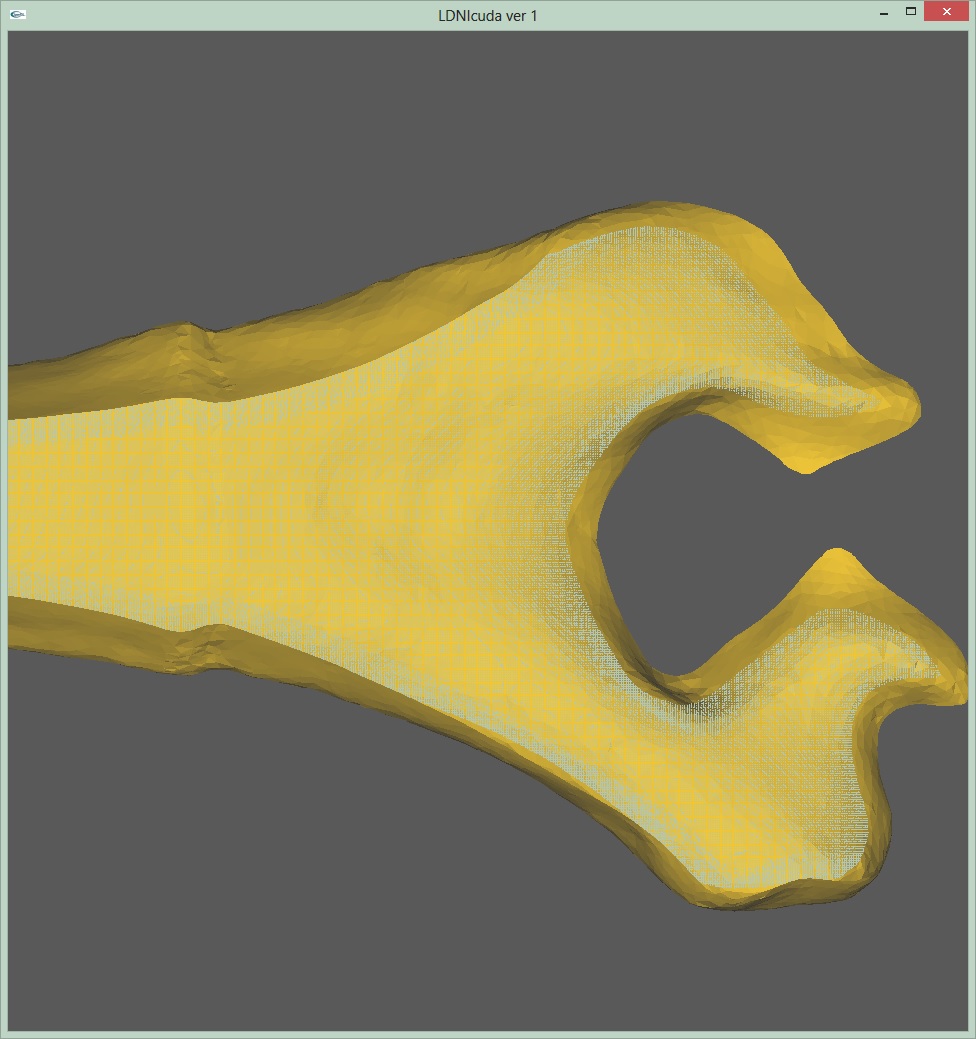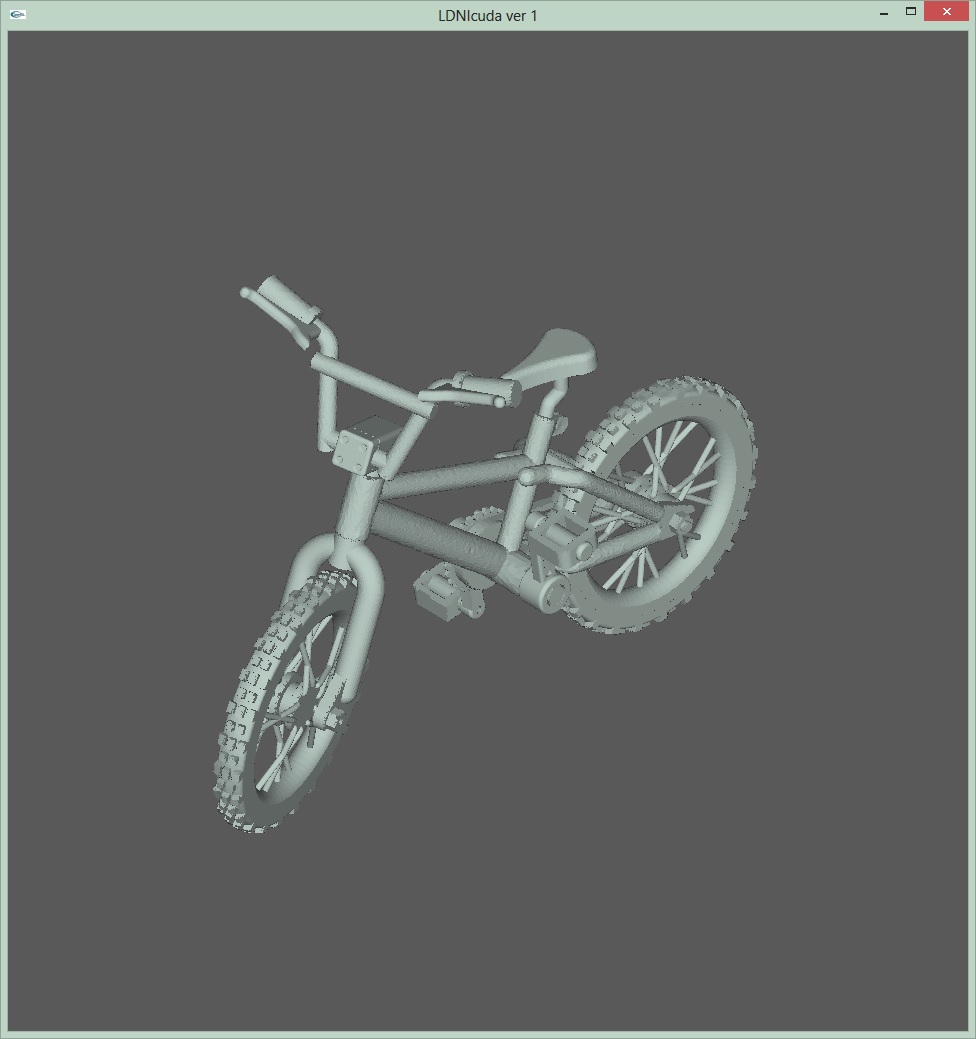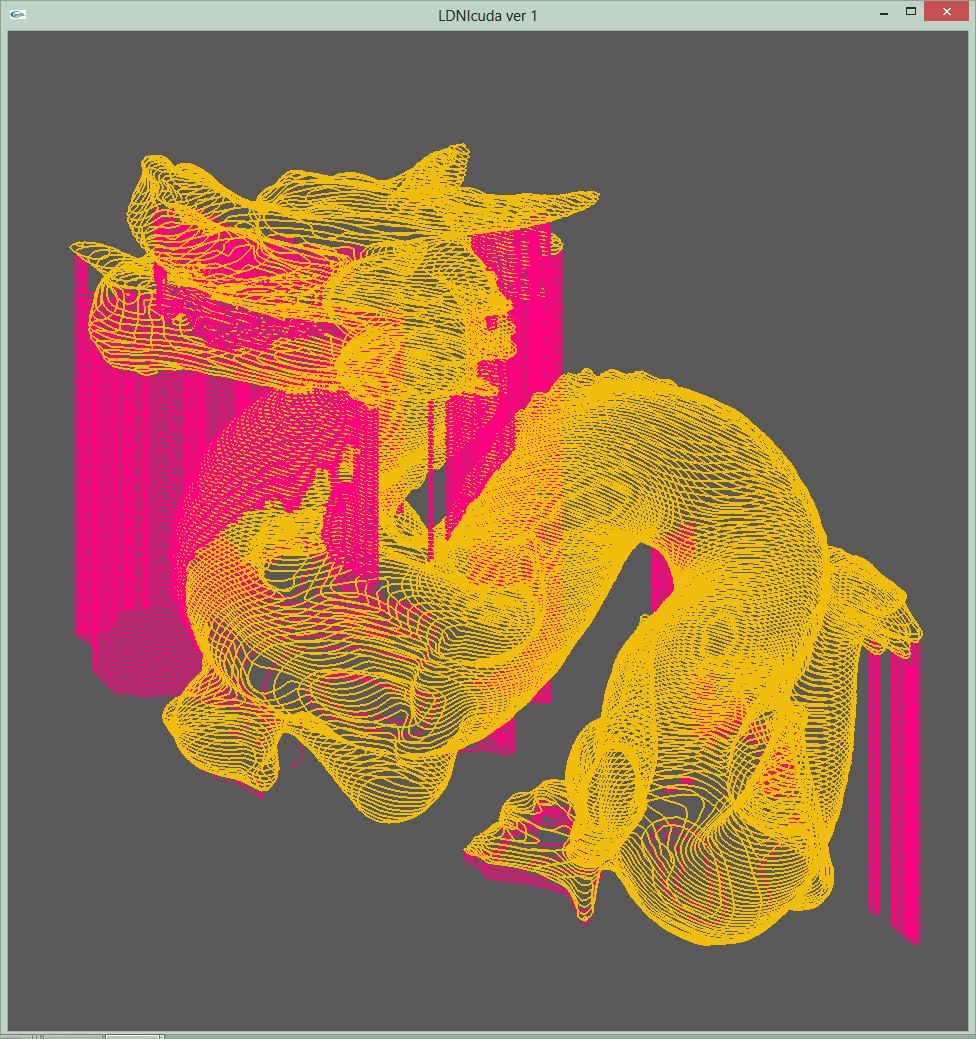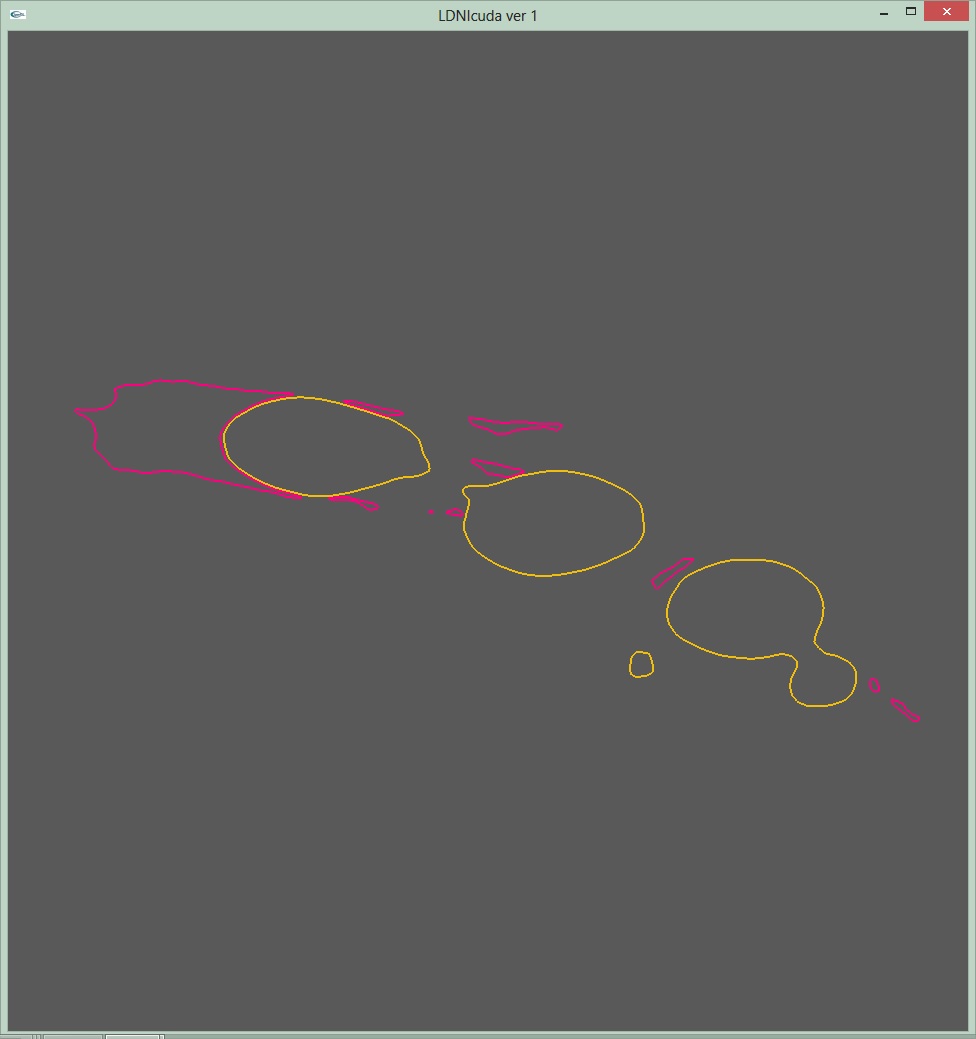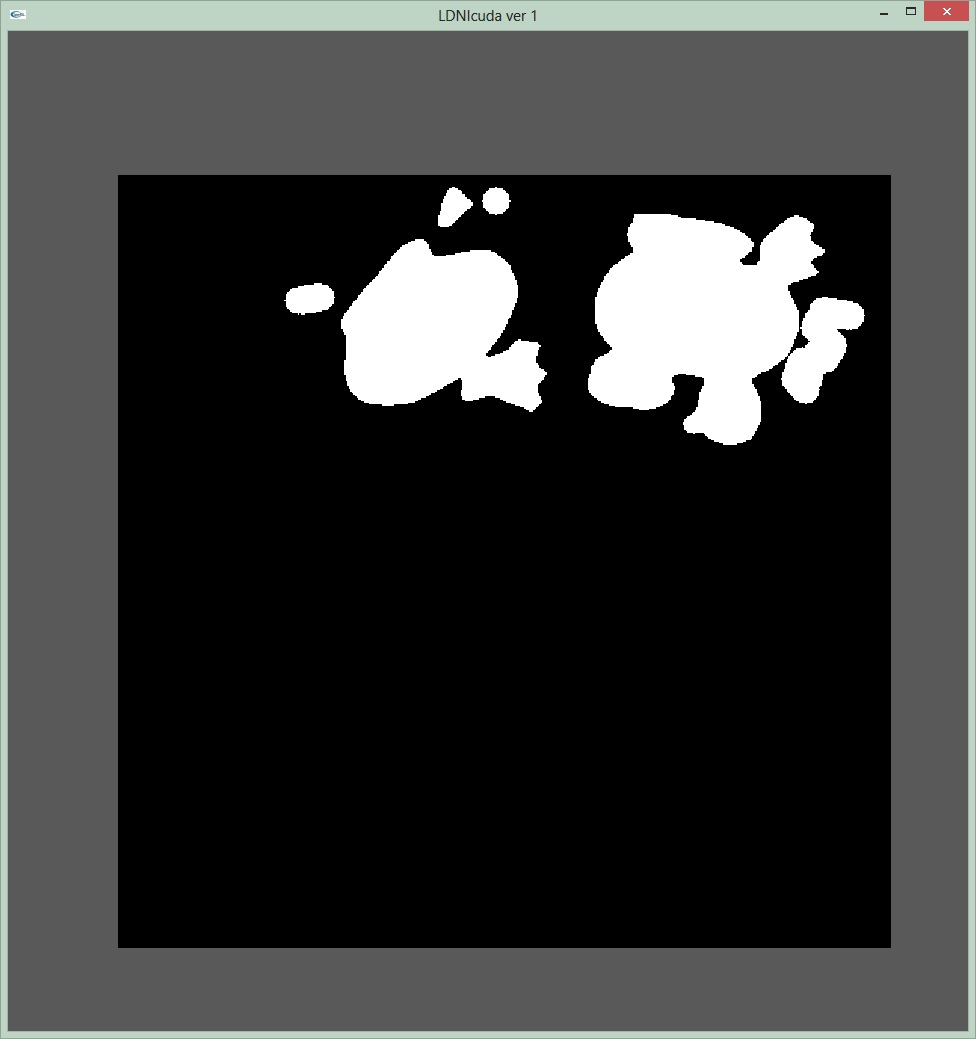This project provides a set of solid modeling tools which aims to help process 3D objects with complex topology and geometry that are widely used in many industrial applications (e.g., microstructure design and manufacturing, biomedical products and applications, jewelry products, reverse engineering).
The system is completely GPU-based and heavily based on an implicit representation named Layered-Depth-Normal-Image (LDNI).
Features
- Input/Output : Obj files
- Boolean Operations - Union, Intersection, and Subtraction
- Offset
- Scaffold
- Super Union - union multiple meshes in one operation
- 3D Printing
- Generate tool path and supporting files for FDM
- Generate stencil images for SLA
Requirements: GPU with compute capability above 2.0 and CUDA >=9.0.
- Windows: using the
slnfile. - Linux: requires glut and glew.
git clone https://github.com/zishun/LDNI-based-Solid-Modeling --depth 1
cd LDNI-based-Solid-Modeling
mkdir build && cd build
cmake ..
makeNote: input file path in the terminal when opening/saving files on Linux.
-
Charlie C.L. Wang, Yuen-Shan Leung, and Yong Chen, "Solid modeling of polyhedral objects by Layered Depth-Normal Images on the GPU", Computer-Aided Design, vol.42, no.6, pp.535-544, June 2010. [link]
-
Yuen-Shan Leung, and Charlie C.L. Wang, "Conservative sampling of solids in image space", IEEE Computer Graphics and Applications, vol.33, no.1, pp.14-25, January/February, 2013. [link]
-
Charlie C.L. Wang, and Dinesh Manocha, "GPU-based offset surface computation using point samples", Computer-Aided Design, Special Issue of 2012 Symposium on Solid and Physical Modeling, October 29-31, 2012, Dijon, France, vol.45, no.2, pp.321-330, February 2013. [link]
-
Shengjun Liu, and Charlie C.L. Wang, "Fast intersection-free offset surface generation from freeform models with triangular meshes", IEEE Transactions on Automation Science and Engineering, vol.8, no.2, pp.347-360, April 2011. [link]
-
Pu Huang, Charlie C.L. Wang, and Yong Chen, "Intersection-free and topologically faithful slicing of implicit solid", ASME Transactions - Journal of Computing and Information Science in Engineering, vol.13, no.2, 021009 (13 pages), June 2013. [link]
-
Pu Huang, Charlie C.L. Wang, and Yong Chen, "Algorithms for layered manufacturing in image space", Book Chapter, ASME Advances in Computers and Information in Engineering Research, 2014. [link]
-
Hanli Zhao, Charlie C.L. Wang, Yong Chen, and Xiaogang Jin, "Parallel and efficient Boolean on polygonal solids", The Visual Computer, Special Issue of Computer Graphics International 2011 (CGI 2011), vol.27, no.6-8, pp.507-517, Ottawa, Ontario, Canada, June 12-15, 2011. [link]
-
Supplementary Technical Report - "Intersection-free dual contouring on uniform grids: an approach based on convex/concave analysis" [link]
